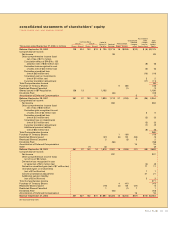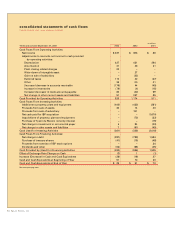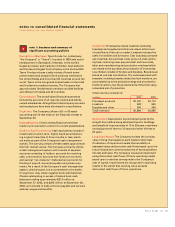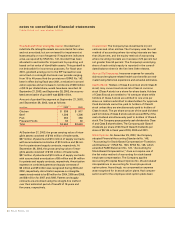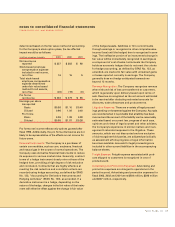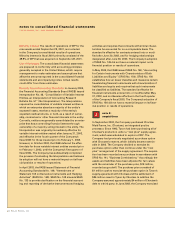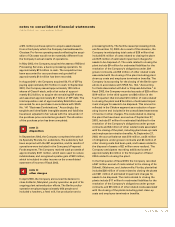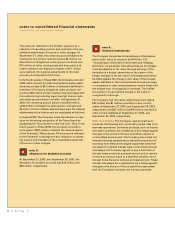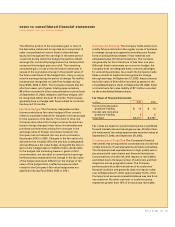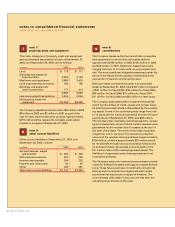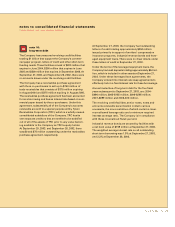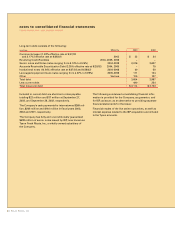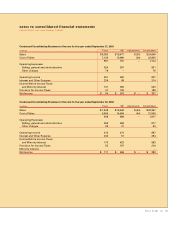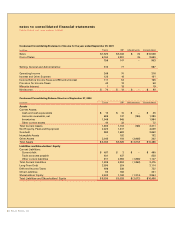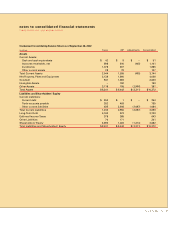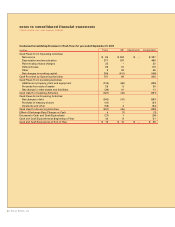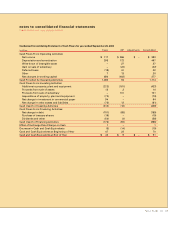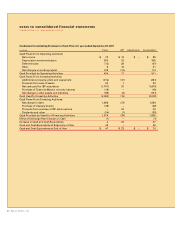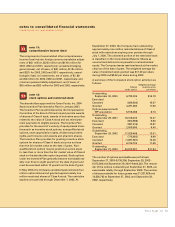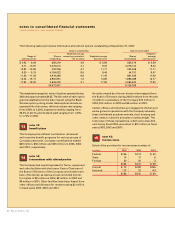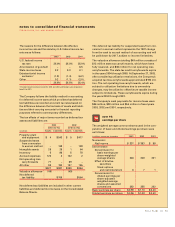Tyson Foods 2003 Annual Report Download - page 45
Download and view the complete annual report
Please find page 45 of the 2003 Tyson Foods annual report below. You can navigate through the pages in the report by either clicking on the pages listed below, or by using the keyword search tool below to find specific information within the annual report.
Tyson Foods, Inc. 43
notes to consolidated financial statements
TYSON FOODS, INC. 2003 ANNUAL REPORT
note 10:
long-term debt
The Company has unsecured revolving credit facilities
totaling $1 billion that support the Company’s commer-
cial paper program, letters of credit and other short-term
funding needs. These facilities consist of $200 million that
expires in June 2004, $300 million that expires in June
2005 and $500 million that expires in September 2006. At
September 27, 2003, and September 28, 2002, there were
no amounts drawn under the revolving credit facilities.
The Company has a receivables purchase agreement
with three co-purchasers to sell up to $750 million of
trade receivables that consists of $375 million expiring
in August 2004 and $375 million expiring in August 2005.
The receivables purchase agreement has been accounted
for as a borrowing and has an interest rate based on com-
mercial paper issued by the co-purchasers. Under this
agreement, substantially all of the Company’s accounts
receivable are sold to a special purpose entity, Tyson
Receivables Corporation (TRC), which is a wholly-owned
consolidated subsidiary of the Company. TRC has its
own separate creditors that are entitled to be satisfied
out of all of the assets of TRC prior to any value becom-
ing available to the Company as TRC’s equity holder.
At September 29, 2003, and September 28, 2002, there
was $0 and $75 million outstanding under the receivables
purchase agreement, respectively.
10
At September 27, 2003, the Company had outstanding
letters of credit totaling approximately $294 million
issued primarily in support of workers’ compensation
insurance programs, industrial revenue bonds and lever-
aged equipment loans. There were no draw downs under
these letters of credit at September 27, 2003.
Under the terms of the leveraged equipment loans, the
Company had cash deposits totaling approximately $54 mil-
lion, which is included in other assets at September 27,
2003. Under these leveraged loan agreements, the
Company entered into interest rate swap agreements to
effectively lock in a fixed interest rate for these borrowings.
Annual maturities of long-term debt for the five fiscal
years subsequent to September 27, 2003, are: 2004–
$490 million; 2005–$185 million; 2006–$295 million;
2007–$899 million and 2008–$16 million.
The revolving credit facilities, senior notes, notes and
accounts receivable securitization contain various
covenants, the more restrictive of which contain a maxi-
mum allowed leverage ratio and a minimum required
interest coverage ratio. The Company is in compliance
with these covenants at fiscal year end.
Industrial revenue bonds are secured by facilities with
a net book value of $159 million at September 27, 2003.
The weighted average interest rate on all outstanding
short-term borrowing was 1.5% at September 27, 2003,
and 3.3% at September 28, 2002.


